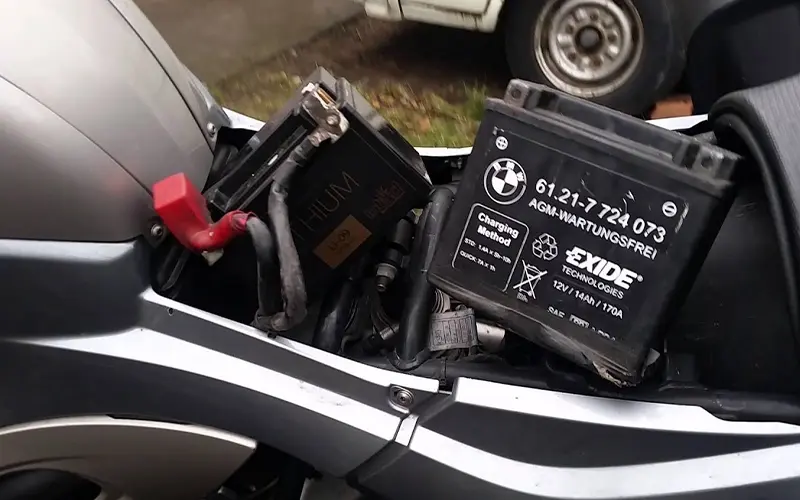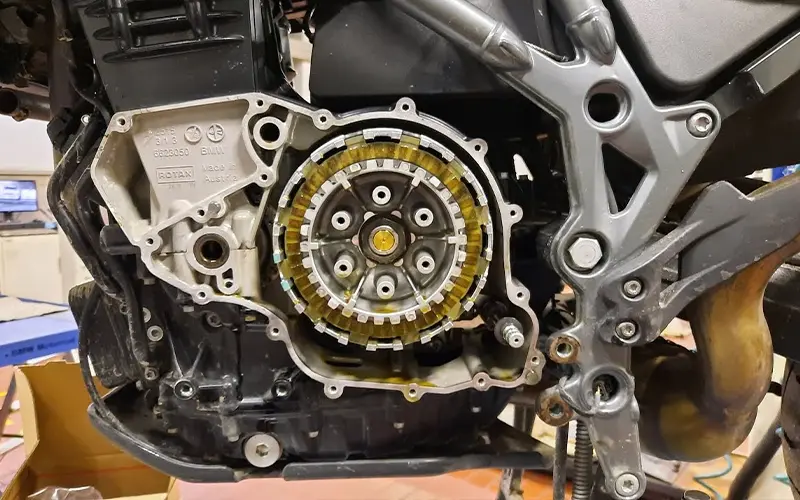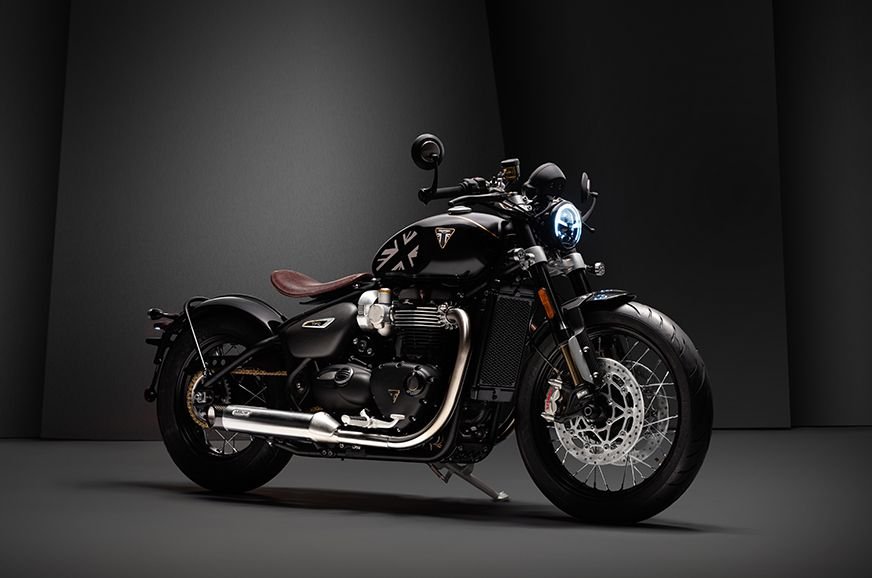There’s nothing worse than getting ready for a ride, gearing up, turning the key, and… nothing. The bike won’t start. Maybe you hear a weak attempt at a crank, or maybe you just get silence. Either way, you know you’re stuck.
A failing motorcycle battery is a frustrating problem, and it usually happens at the worst possible time—when you least expect it. Unlike other parts of your bike, which show visible wear and tear, a battery can weaken silently until it’s too late. One day, your bike fires up perfectly, and the next, it refuses to start.
So, how do you know when it’s time to replace your motorcycle battery? The good news is that there are clear warning signs, and if you catch them early, you can replace your battery before it leaves you stranded. Let’s go over the most common signs of a dying motorcycle battery, how to test it, and what you can do to extend its lifespan.
Why Your Motorcycle Battery Matters More Than You Think
Your motorcycle battery does more than just start the engine. It’s responsible for powering all the essential electrical components of your bike, including the ignition system, fuel injection, headlights, turn signals, and even accessories like heated grips or a phone charger.
A weak battery doesn’t just mean trouble starting the bike—it can cause misfires, flickering lights, and even performance issues. If you ignore the signs, you could end up damaging other electrical parts of your bike.
How to Tell If Your Motorcycle Battery is Dying
1. The Engine Cranks Slowly or Struggles to Start
One of the first signs of a weakening battery is a slow or sluggish engine crank when you hit the starter button. Your bike might still start, but if it sounds weaker than usual or takes a couple of tries before the engine fires up, your battery may not be delivering enough power.
At first, this problem may be inconsistent—it happens some days but not others. However, as the battery continues to degrade, it will struggle more often until it eventually fails completely. If you’ve noticed your bike taking longer to start, don’t wait until you’re stranded—check your battery now.
2. Clicking Sound When You Try to Start the Bike
If you press the start button and hear a rapid clicking noise, but the engine doesn’t turn over, that’s a major red flag. This clicking sound comes from the starter solenoid, which is trying to engage the engine but isn’t getting enough power from the battery.
Sometimes, jump-starting the bike will get it going, but this is only a temporary fix. If you experience this issue more than once, your battery is likely near the end of its life.
3. Dim Headlights and Electrical Issues
A healthy motorcycle battery provides stable voltage to your lights, signals, and dashboard. If your battery is struggling, you might notice:
- Headlights that seem dimmer than usual, especially at idle.
- Turn signals that blink slower or behave erratically.
- Dashboard lights that flicker or reset when starting the bike.
If these symptoms occur, test your battery immediately. Electrical issues can sometimes be caused by other factors, such as a faulty stator or regulator/rectifier, but a weak battery is often the culprit.
4. Your Battery is More Than 3 to 5 Years Old
Like any other part of your bike, a motorcycle battery has a lifespan. Most batteries last between three to five years, depending on how often you ride, how well you maintain it, and the weather conditions in which you store your bike.
If your battery is approaching or past this range, it’s a good idea to replace it before it fails. Even if it still starts the bike, an old battery is more likely to die unexpectedly, especially in colder temperatures or after a few days of not riding.
5. Your Bike Needs Frequent Jump-Starts
If you’ve had to jump-start your bike more than once in a short period, your battery is no longer holding a proper charge. A one-time jump-start might be due to leaving the lights on or not riding for a long time, but if your bike constantly dies after sitting for a day or two, the battery isn’t holding enough power.
A fully charged, healthy battery should be able to hold a charge for weeks without needing a jump. If your battery dies quickly after charging, it’s time for a replacement.
6. Corroded or Leaking Battery Terminals
Take a look at your battery terminals. If you see white, green, or crusty corrosion, this is a sign that your battery is leaking acid or gas. Corrosion can weaken the connection between the battery and the bike, causing intermittent power loss and poor performance.
If your battery regularly builds up corrosion, cleaning the terminals might temporarily improve things, but it’s a sign that the battery is aging and will likely fail soon. A leaking battery is also a safety hazard, so if you see corrosion, replace it as soon as possible.
7. Your Bike Shuts Off Randomly While Riding
If your motorcycle randomly loses power or shuts off completely while riding, your battery might be failing to deliver consistent voltage. A weak battery can cause the electrical system to fluctuate, leading to engine misfires, stalling, or even full power loss.
While other electrical components (such as a faulty alternator or regulator) can also cause this, a bad battery is often the main reason for sudden shutdowns.
How to Test Your Motorcycle Battery
If you suspect your battery is weak, you can test it yourself with a multimeter or take it to a local motorcycle shop for a battery load test.
Using a Multimeter to Check Your Battery:
- Set your multimeter to DC voltage (usually 20V setting).
- Connect the red probe to the positive (+) battery terminal and the black probe to the negative (-) terminal.
- Read the voltage:
- 12.6V or higher → Battery is fully charged and healthy.
- 12.4V – 12.6V → Slightly low but still usable.
- Below 12.2V → Battery is weak and may struggle to start the bike.
- Below 12V → Battery is likely dead or failing—replace it soon.
If the voltage drops below 10V while cranking the engine, that’s a definite sign of a failing battery.
How to Extend Your Battery’s Life
To get the most out of your motorcycle battery, follow these simple maintenance tips:
- Ride regularly to keep the battery charged—long periods of inactivity drain power.
- Use a battery tender if you store your bike for long periods.
- Check and clean battery terminals to prevent corrosion.
- Avoid overloading the electrical system with unnecessary accessories.
When to Replace Your Motorcycle Battery
If your battery is over three years old and showing any of the warning signs above, it’s time to replace it. Don’t wait until it leaves you stranded.
Final Thoughts – Don’t Get Stuck with a Dead Battery
Your motorcycle battery is the heart of your bike’s electrical system. If it’s weak or unreliable, it can cause starting problems, performance issues, and even sudden shutdowns.
By catching the warning signs early, testing your battery, and replacing it before it fails, you’ll never have to deal with the frustration of a bike that won’t start.
👉 Upgrade Your Battery Today and keep your ride running strong!
Stay powered, stay prepared, and enjoy the ride!









